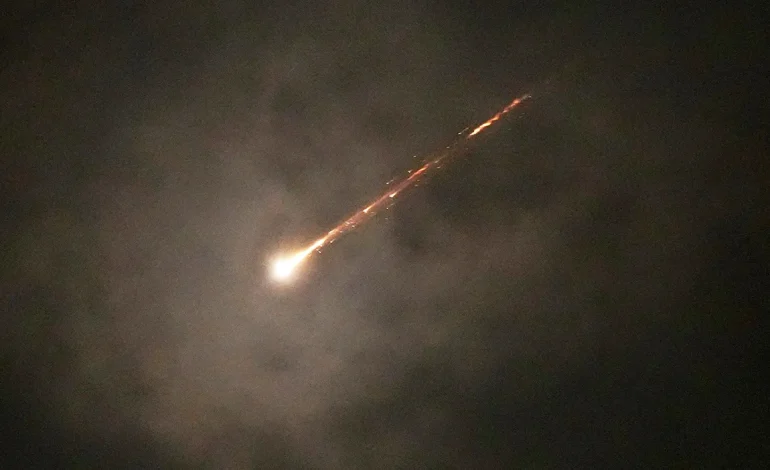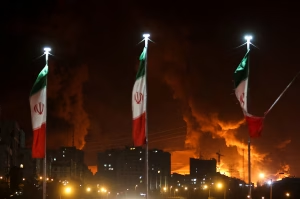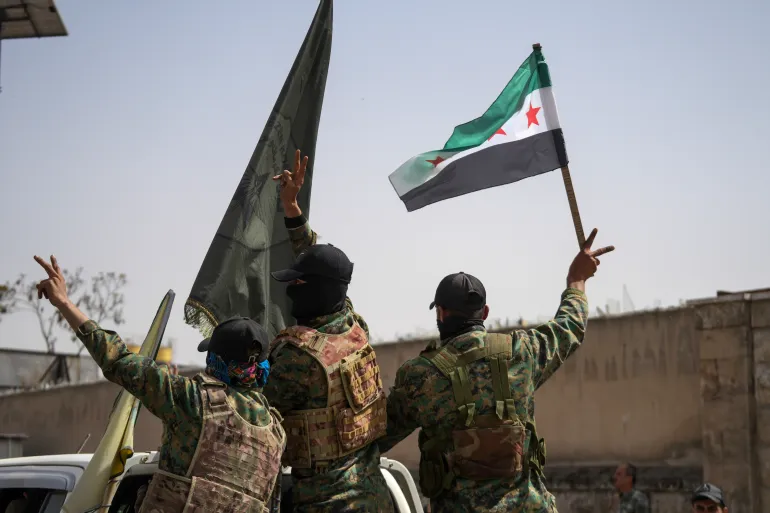ANALYSIS: Houthi-Iran Coordination Signals Broader Escalation in Israel’s Expanding Regional War

The announcement by Yemen’s Houthi movement that it coordinated missile attacks on Israel with Tehran over the past weekend marks a major shift in the regional dynamics of the ongoing Middle East conflict.
For the first time, an Iranian-aligned proxy has publicly acknowledged direct operational coordination with the Iranian government in striking Israel. This development suggests a deeper, more integrated regional warfront as Israel remains engaged in simultaneous conflicts with Hamas in Gaza, Hezbollah in Lebanon, and now more overtly, with Iranian-linked actors stretching from Syria to Yemen.
On Sunday, Houthi military spokesperson Yehya Sarea claimed responsibility for launching multiple ballistic missiles toward central Israel, specifically targeting Jaffa. In a televised statement, Sarea framed the operation as a joint effort with Iran, undertaken “triumphing for the oppressed Palestinian and Iranian peoples,” and as part of the broader retaliation against what he termed the “criminal Israeli enemy.”
Israel confirmed missile launches from both Iran and Yemen, with air raid sirens sounding in multiple cities. One missile fired from Yemen reportedly landed in Hebron in the occupied West Bank, according to Israeli authorities, though the Houthis did not claim that particular strike.

While the Houthis have repeatedly attacked Israel since the October 7, 2023, Hamas-led assault and subsequent Israeli invasion of Gaza, this open admission of coordination with Iran elevates the threat from a proxy conflict to a multi-front confrontation with real-time synchronization between Tehran and its regional allies.
This is no longer a war isolated to Israel and Hamas.
It is a complex regional crisis with growing risks of direct state-to-state conflict, in which Iran and its network of allies are pressing from multiple directions. The Houthis’ explicit mention of Iranian collaboration sets a precedent and raises the stakes for Israel, the U.S., and regional powers.
Strategic Ramifications for the U.S.
Mona Yacoubian, senior adviser and director of the Middle East Program at the Center for Strategic and International Studies (CSIS), contextualizes the broader U.S. security implications stemming from the Red Sea and Houthi activity:

The United States has long promoted freedom of navigation as a vital U.S. national security interest in the Middle East. As such, Houthi disruption of Red Sea shipping has had an adverse impact on this core American interest. Since November 2023, the Houthis have undertaken nearly 500 attacks on shipping, using ballistic missiles as well as drones.
These attacks prompted a U.S. military response which resulted in U.S. forces engaging in the most significant naval warfare since World War II. It has also come at a high cost, with the military spending at least $1.5 billion on munitions. The May 6 ceasefire between the United States and the Houthis has quieted the battlespace somewhat, although the Houthis continue to attack Israeli targets including Ben Gurion airport in Tel Aviv.
However, more significantly, the Houthis have demonstrated the limits of conventional approaches to deterrence in a world where missile and drone technologies are cheap and widely available. This ragtag Yemeni militia catapulted itself onto the world stage, demonstrating its ability to go up against the most powerful military in the world.
Going forward, U.S. military planners and strategists will need to devote more time and thinking to how to counter this emerging style of warfare. The Red Sea challenges may only be a proving ground for other adversaries to take up the mantle elsewhere in the world.
War of Many Fronts
Israel’s military is now fully engaged across multiple theaters: battling Hamas in Gaza, facing off with Hezbollah in Lebanon’s south, striking Syria and Iraq to neutralize Iranian supply routes, and responding to cross-border attacks from Yemen. In the span of days, Israel has also conducted major airstrikes deep inside Iran — including the high-profile assassinations of senior commanders in Tehran.
What was once seen as a conventional conflict with Hamas has now become a broader regional confrontation with state-backed and non-state actors pressing Israel’s defenses from multiple vectors. Iran’s ability to coordinate and support such strikes — whether from Yemen, Lebanon, Iraq or Syria — underlines the effectiveness of its proxy network, even amid Israeli and U.S. efforts to degrade it.
As the Houthis continue to test long-range strike capabilities and engage openly with Iran, they become not just a peripheral threat but a key player in shaping the next stage of asymmetric regional warfare.
With input from Reuters








The latest news in your social feeds
Subscribe to our social media platforms to stay tuned